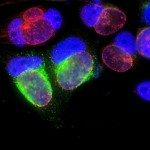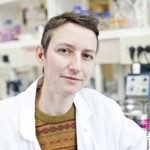Lien vers Pubmed [PMID] – 23371946
Plant Cell 2013 Jan;25(1):7-21
Under the endosymbiont hypothesis, over a billion years ago a heterotrophic eukaryote entered into a symbiotic relationship with a cyanobacterium (the cyanobiont). This partnership culminated in the plastid that has spread to forms as diverse as plants and diatoms. However, why primary plastid acquisition has not been repeated multiple times remains unclear. Here, we report a possible answer to this question by showing that primary plastid endosymbiosis was likely to have been primed by the secretion in the host cytosol of effector proteins from intracellular Chlamydiales pathogens. We provide evidence suggesting that the cyanobiont might have rescued its afflicted host by feeding photosynthetic carbon into a chlamydia-controlled assimilation pathway.


